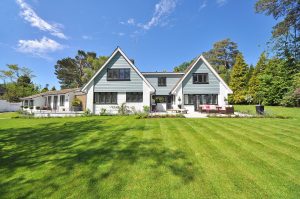The custom home construction process in Charlotte is an exciting endeavor. The excitement is multiplied when you are aware of the entire construction process. Do not forget that the home building process can vary slightly from one region to another. To be sure about how the process in your region is, ask a Charlotte  contractor.
contractor.
Nevertheless, the following overview of the complete custom home construction process will give you a fair understanding of the processes involved.
1. Preparation of the Site and Pouring of Foundation
The site preparation and the foundation work are often done by the same group of workers. However, this may not be fully true with a wooded lot. The crew clears the site using a bulldozer and a backhoe, removing any debris, rocks, and trees.
The site is then leveled and wooden frames are set up to serve as a template for the footings of the foundation. The foundation walls are Formed and poured or built using concrete masonry units.
2. Completion of Rough Framing
The Charlotte Design Build Contractor will then have the floor systems, roof systems, and the walls completed. Plywood or the oriented strand board (OSB) sheathing is applied to the wall’s exterior. The doors and windows are also installed. Once the wood framing is complete roofing materials are added to “dry in” the home.
3. Completion of Rough Plumbing, HVAC, and Electrical
The electrical and plumbing contractors also start to install wires and pipes through the floors, interiors, and pipes.
Vents and sewer lines along with water supply lines for each of the fixtures are installed.
The ductwork for HVAC systems is also placed at this time. The electrician also installs the lights, outlets, and switches.
4. Installation of Insulation
Insulation has a crucial role to play in making the indoor environment consistent and comfortable. It also improves the energy efficiency of the house. The most common kinds of insulation installed in Charlotte custom homes are cellulose, fiberglass, and foam.
Ask your Charlotte builder which insulation would be best depending on the climate and pricing. There are many other types of insulation options available. Make sure you have chosen the correct one for your home during the planning process.
5. Completion of Interior Fixtures and Drywall
Drywall is hung and then taped so that the seams between boards are not visible. The drywall texturing is also completed at this point, if it is necessary.
After taping has been completed, the primer coat is also applied. Once the interior fixtures have been installed, the contractor begins to install exterior ones such as stucco, brick, siding and stone.
6. Interior Trim Finishing
Interior baseboards, doors, door casings, moldings, window sills, and other decorative trims are installed. Fireplace materials and cabinets are also put in place as the final coat of paint is applied to the walls.
Countertops and hard surface flooring is also installed at this point and the yard is prepared for landscaping. All other accessories such as mirrors are installed followed by a final walkthrough to ensure everything is in place.
